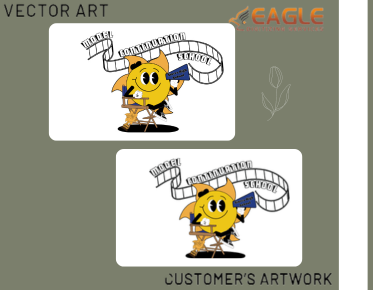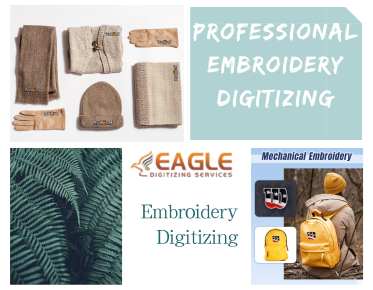Myth: Only Designers Need to Know About Vectors
There’s a common misconception floating around the creative world: vectors are only for designers. But that’s a myth, and it’s high time to debunk it. Whether you're a business owner, a hobbyist, or even someone working in education or healthcare, understanding vectors can dramatically expand your creative toolkit. These powerful digital assets aren’t confined to the world of professional design—they’re versatile, practical, and surprisingly easy to master for anyone willing to learn. In this article, we’ll explore why vectors are a game-changer, even if you're not a designer by trade.
What
are Vectors Anyway? A Simple Breakdown
Before we dive into how vectors can benefit everyone, let’s first take
a moment to understand what they are. Simply put, a vector is a type of digital
image that’s made up of paths, defined by mathematical equations. Unlike raster
images, which are made up of pixels, vectors are infinitely scalable without
any loss in quality. This means they can be resized, rotated, and adjusted
without ever becoming blurry or pixelated—no matter how large or small they
get. Think of vectors as the digital equivalent of a perfectly crisp line
drawing, where every curve and shape is based on a series of mathematical
instructions.
The
Rise of Vectors in the Digital World
In today’s digital age, vectors have become a cornerstone of design
and content creation. The advent of vector-based software like Adobe
Illustrator and Inkscape has allowed even the most novice users to create
crisp, professional-looking designs. This explosion in digital content has
brought vectors to the forefront—not just in design, but in marketing, web
development, and even social media. As a result, vectors have become a go-to
format for everything from logos to icons to illustrations. And the best part?
They’re no longer reserved for the elite few who know how to use complicated design software.
Vectors
in Everyday Life: Why You Should Care
You might not realize it, but vectors are all around you. From the
sleek logos of your favorite brands to the interactive maps you use on your
phone, vectors play a vital role in creating visually appealing, functional
designs. Whether you're scrolling through social media, checking out a website,
or even reading a digital magazine, there's a good chance you’re encountering vector images. Their flexibility and clarity make
them ideal for the fast-paced world of modern digital content. Understanding
vectors opens up new possibilities for you, whether you’re working on a
professional project or simply exploring your creative ideas.
More
Than Just Graphics: How Vectors Impact Your World
While vectors are often associated with graphics, their impact extends
far beyond just visual appeal. Vectors influence how we interact with
technology daily. Take your smartphone, for example—many of the icons and
interface elements are vectors. Their clean lines and ability to scale to any
screen size are why they're so widely used in digital interfaces. Vectors also
influence how products are displayed on e-commerce sites or how instructions
are communicated through simple, understandable visuals. In other words,
vectors help make the digital world more functional, efficient, and engaging.
From
Logos to Maps: The Ubiquity of Vectors in Modern Media
Logos, icons, infographics, maps—you name it, vectors are there. These
images need to be crisp, clear, and adaptable to different sizes and formats.
Whether it's the branding of a major company or the map app on your phone,
vectors ensure that visual elements remain sharp and legible no matter where
they appear. From the resolution of your desktop screen to a billboard on the
side of the highway, vectors hold up. They're the unsung heroes behind much of
the visual content we engage with daily, contributing to both the aesthetic and
practical functions of digital media.
The
Power of Scalability: Vectors vs. Raster Images
One of the most impressive features of vectors is their scalability.
Unlike raster images—think of those lovely photos you take on your phone or tablet—vectors
can be resized to any dimension without losing an ounce of quality. Raster
images, on the other hand, lose their sharpness and clarity as you enlarge
them, leading to pixelation. Vectors solve this problem by maintaining smooth
lines and perfect proportions at any scale. This scalability makes them the
go-to choice for logos, signage, and any design work that may need to appear in
multiple sizes across various platforms.
Size
Doesn’t Matter: The Magic of Scaling Without Losing Quality
Imagine creating a logo for your business. You’ll need that logo to
look just as great on a small social media icon as it does on a giant
billboard. Here’s where vectors come into play. With vectors, you don’t need to
worry about pixelated edges when scaling your design. The beauty lies in their
ability to remain crisp, clean, and professional no matter the size. Whether
you’re resizing a website logo or preparing a printed ad, vectors allow you to
work confidently, knowing that your design will always look sharp and polished.
When Vectors Are Your Best Friend for Digital Projects
In the digital world, vectors can be your best friend. From building
your website’s user interface to creating social media posts that stand out,
vectors are incredibly versatile and help streamline the design process. Want
to create a stunning social media post with a customgraphic? You can do it easily with vector-based tools that allow for
seamless scaling and easy customization. Whether you're designing for personal
projects, content creation, or even starting your own small business, vectors
enable you to produce professional-quality visuals with minimal effort.
Vectors
for Non-Designers: Why You Should Learn the Basics
You don’t have to be a trained designer to appreciate the power of
vectors. Learning the basics of vectors can transform the way you approach your
digital projects. For anyone running a business, creating content for a blog,
or even developing educational materials, understanding how vectors work can
unlock a world of possibilities. No need to become a design expert—simply
grasping the fundamental concepts of vector images allows you to experiment and
create designs that elevate your work, without needing to rely on expensive
designers or complicated software.
Creative
Projects, Business, and Beyond: How Vectors Enhance Your Work
Think of the creative possibilities at your fingertips once you grasp
the fundamentals of vectors. Whether you’re working on a DIY project, creating
content for your brand, or improving the visuals for a business proposal,
vectors provide the tools to make your designs more polished and impactful. A
well-crafted vector logo can elevate your business branding, while vector
illustrations and icons can make your content more engaging and memorable. The
beauty of vectors lies in their flexibility—tailoring them to suit any project,
big or small, becomes second nature.
The
Ease of Customizing With Vectors: No Design Degree Needed
Here’s the thing: customizing with vectors isn’t nearly as
intimidating as it sounds. With the right tools, anyone can get started with
basic design tasks, like creating custom logos, infographics, or social media
images. Even if you have no design background, vector-editing software offers
user-friendly features that make the customization process accessible. With
templates, drag-and-drop tools, and a wealth of online tutorials, transforming
a basic vector into something uniquely yours is easier than ever.
Demystifying Vector Tools: A Beginner’s Guide
Starting with vector tools can seem daunting, but once you get the
hang of it, you'll wonder why you didn’t try it sooner. Popular software like Adobe
Illustrator, Inkscape, and Affinity Designer
provide intuitive interfaces that allow beginners to explore vector design
without feeling overwhelmed. These programs often include tutorials, templates,
and step-by-step guides that walk you through the basics, helping you create
beautiful designs without requiring years of formal training.
Software
You Can Use Without Getting Overwhelmed
One of the best things about vector design is that you don’t need
high-end, expensive software to get started. Free programs like Inkscape or
Gravit Designer are excellent for beginners, providing a vast range of tools
that allow you to create professional-looking vector art without breaking the
bank. These tools are straightforward and come with plenty of learning
resources to help you build your confidence and skills over time.
A
Simple Introduction to Popular Vector Editing Tools
Let’s break down some popular vector editing tools that can jumpstart
your creative projects. Adobe Illustrator is the industry standard, offering
powerful features that suit both professionals and amateurs alike. But if
you’re looking for something a little less intimidating, Affinity Designer is a
fantastic alternative, offering many of the same features at a lower cost. Inkscape
is another great option, especially for those on a budget, with a robust
feature set and an open-source license that allows anyone to access the
software for free.
Vast
Versatility: Vectors Across Industries
The true beauty of vectors lies in their versatility. These digital
wonders transcend industries, providing solutions for design, marketing,
technology, and even education. In marketing, for example, vector-based
graphics allow brands to create logos, advertising materials, and infographics
that resonate with their target audiences. Vectors also play an important role
in product design, architecture, and even fashion, offering limitless potential
for customization and scale.
Vectors
in Marketing: How It Can Boost Your Brand
In the world of marketing, visual identity is everything. Vectors are
integral in creating logos, icons, and other graphical elements that form the
visual backbone of any brand. From the subtle elegance of a corporate logo to
the vibrant imagery used in online ads, vectors ensure that brand visuals
remain polished and professional across all media. The ability to resize and
manipulate these elements easily makes vectors a must-have for businesses
looking to maintain consistency and impact in their marketing campaigns.
Tech,
Education, and Even Healthcare: Surprising Uses of Vectors
Vectors aren’t just for marketers and designers. These images are
widely used in tech, education, and healthcare too. In tech, they’re used in
website and app design to create scalable, responsive user interfaces. In
education, vectors are often used to create informative, easy-to-understand
charts, diagrams, and illustrations that make complex concepts more digestible.
Even in healthcare, vectors play a role in medical illustrations, infographics,
and instructional materials, helping convey critical information with clarity
and precision.
The
Role of Vectors in Personal Projects and Hobbies
You don’t need to be a professional to appreciate the creative freedom
vectors offer. Whether you’re designing graphics for your blog, planning your
next YouTube video, or creating custom invitations for a special event, vectors
allow you to bring your ideas to life with ease. By mastering a few basic
techniques, you can customize your visuals to reflect your unique style and
make every project stand out.
DIY
Graphics for Your Blog, YouTube Channel, or Social Media
Looking to create custom graphics for your blog, social media, or
YouTube channel? Vectors are a fantastic way to create professional-quality
designs without hiring a designer. From headers and icons to thumbnails and
banners, vectors allow you to design eye-catching visuals that’ll help your
content stand out from the crowd. Plus, their scalability means your graphics
will always look sharp and clean on any platform.
The
Art of Creating Custom Invitations, Posters, and More
Whether you're planning a wedding, throwing a birthday bash, or
hosting a charity event, creating custom invitations and posters can be a fun
and rewarding project. With vector tools, you can design one-of-a-kind
invitations that reflect your style. Custom posters for events, parties, or
even promotional purposes are just as easy to make, allowing you to craft
visuals that are both creative and professional.
Overcoming
the Fear: Getting Comfortable With Vectors
Many people shy away from learning vectordesign because they feel it’s too complicated or overwhelming. The truth is, once you get started and familiarize yourself with basic vector tools, you’ll find that it’s not as difficult as it seems. By taking small steps, experimenting with simple designs, and exploring free resources online, you can quickly build your confidence and start creating impressive visuals of your own.



.png)